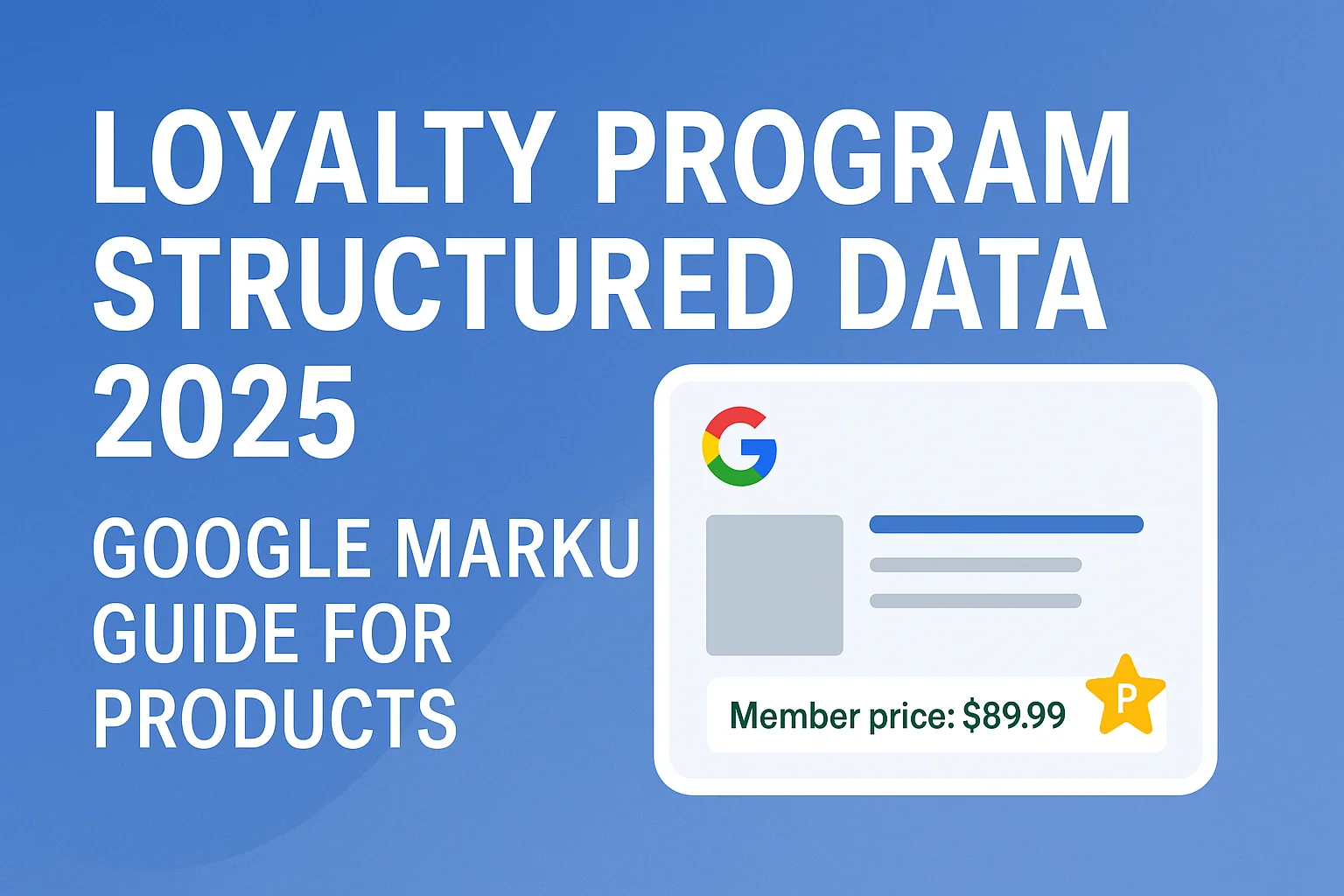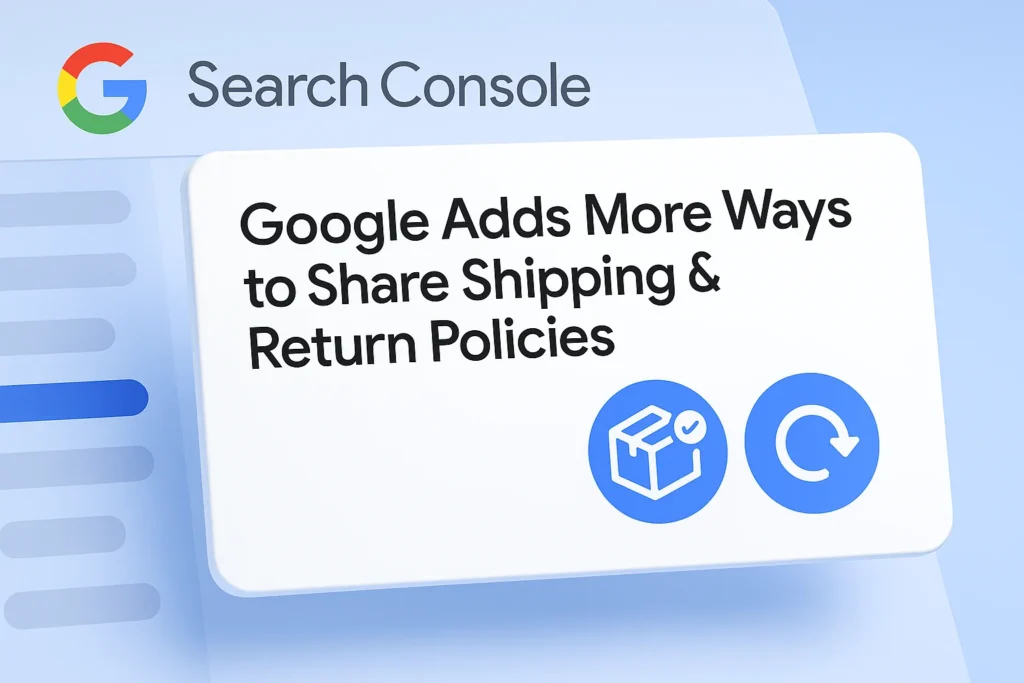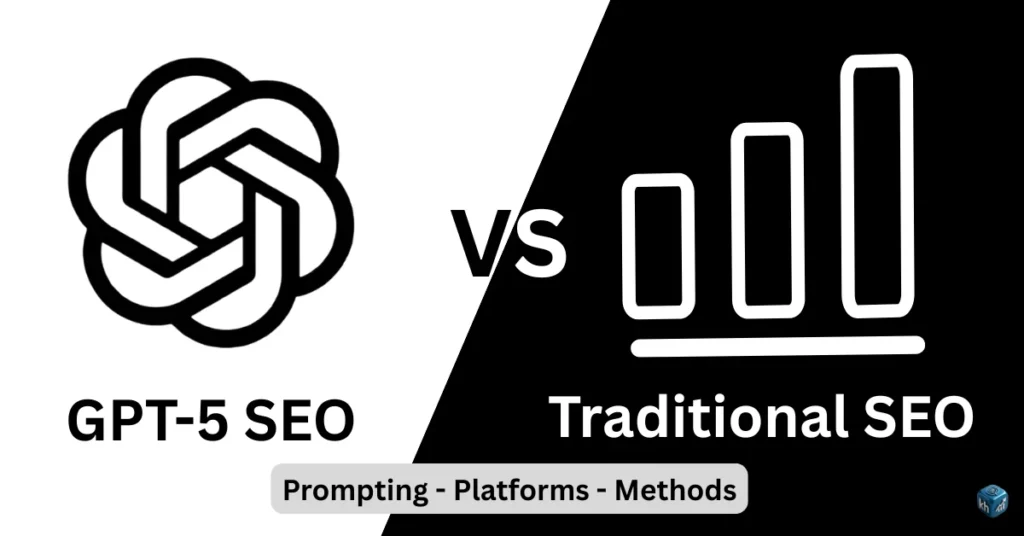How to Add Loyalty Program Structured Data to Boost Product Listings (2025 Update)

Overview of Google’s Loyalty Program Structured Data (June 2025 Update)
📣 What’s New in Google Search?
In June 2025, Google officially launched support for loyalty program structured data within product listings.
This lets merchants display membership-specific pricing, benefits, or points rewards directly in Search and Google Shopping.
It’s designed to help eligible logged-in users see personalized discounts and member-only perks, improving product visibility and CTR.
🎯 What Is Loyalty Program Structured Data?
It’s an extension of the existing Product and Organization schema that allows merchants to define:
- Which loyalty program(s) a customer can join
- Who provides the program
- Whether the user is a member or non-member
- What product perks are available for each status
🔍 Where It Appears
Loyalty-related product details are now eligible to show in:
- Google Search results (product-rich snippets)
- Google Shopping listings
- AI-generated Search overviews (for logged-in users)
🧠 This feature helps brands compete on value, not just price — highlighting long-term customer incentives.
🛠 Schema Overview
Google’s documentation outlines three key components for loyalty program markup:
| Schema Type | Purpose |
|---|---|
Product | Main product being offered |
Offer → priceSpecification | Defines pricing for different tiers |
Organization | Declares the loyalty program provider |
MemberProgram | Optional, describes the actual program |
MemberProgramMembership | Connects user status with benefits |
🧾 Example Use Cases
| Scenario | Loyalty Structure |
|---|---|
| User is logged out | Show retail (non-member) price |
| User is a bronze member | Show retail + discounted bronze pricing |
| User is a gold member | Show deeper discount or free shipping |
| Program details | Show points-per-purchase, tier name, perks |
This works well for industries like:
- Electronics (e.g., members get 5% off)
- Retail & Fashion (e.g., free returns for platinum members)
- Food Delivery or Subscriptions (e.g., reward points on orders)
🧠 Why It Matters for SEO
| Benefit | SEO/UX Impact |
|---|---|
| 🎯 Personalized rich results | Improves user engagement + CTR |
| 🔒 Member-only perks | Drives registration and loyalty |
| 💸 Tier-based pricing | Shows value over time, not just one-time offers |
| 📊 Google surfaces “member benefit” signals in AI Overviews | Greater visibility for trusted brands |
🔗 Related:
- Technical SEO Guide
- Merchant Product Offer Structured Data
- Google AI Overview Structured Data Support
JSON-LD Examples for Loyalty Program Markup
🧩 Core Structure: Product → Offer → priceSpecification
To add loyalty pricing and benefits, you’ll build your JSON-LD using:
Product→offersOffer→priceSpecification(for standard & loyalty prices)priceSpecification→validForMemberTier(to target membership levels)validForMemberTier→MemberProgramTier→@id(connects to tier info)
✅ Example 1: Product With Loyalty Price (Gold Tier)
jsonCopyEdit{
"@context": "https://schema.org/",
"@type": "Product",
"name": "Smartphone X200",
"image": "https://kumarharshit.in/images/smartphone-x200.jpg",
"sku": "X200-BLK-128GB",
"offers": {
"@type": "Offer",
"priceCurrency": "USD",
"price": 799.00,
"priceSpecification": [
{
"@type": "UnitPriceSpecification",
"price": 799.00,
"priceCurrency": "USD"
},
{
"@type": "UnitPriceSpecification",
"price": 749.00,
"priceCurrency": "USD",
"validForMemberTier": {
"@type": "MemberProgramTier",
"@id": "https://kumarharshit.in/loyalty/gold-tier"
}
}
]
}
}
🛍 Defining the Loyalty Program Tier
You must define the tier object using a unique @id, which should match what you used inside validForMemberTier.
🔧 Example: Gold Tier Defined
jsonCopyEdit{
"@context": "https://schema.org",
"@type": "MemberProgramTier",
"@id": "https://kumarharshit.in/loyalty/gold-tier",
"name": "Gold Member"
}
📌 Add this as a separate object either on the same page or through additional schema definitions.
🧾 Example 2: Loyalty Pricing with Points Accumulation
jsonCopyEdit"offers": {
"@type": "Offer",
"priceCurrency": "USD",
"price": 100.00,
"priceSpecification": {
"@type": "UnitPriceSpecification",
"price": 85.00,
"priceCurrency": "USD",
"eligibleTransactionVolume": {
"@type": "PriceSpecification",
"price": 100,
"priceCurrency": "USD"
},
"validForMemberTier": {
"@type": "MemberProgramTier",
"@id": "https://kumarharshit.in/loyalty/bronze"
}
}
}
🧠 This model supports point-based discounts or special pricing based on transaction volume and tier.
📎 Connect to an Organization (Loyalty Program Provider)
Declare the loyalty provider using Organization schema.
🔧 Example:
jsonCopyEdit{
"@type": "Organization",
"name": "KumarHarshit Club",
"url": "https://kumarharshit.in/loyalty-program"
}
Then link it in the MemberProgramTier or MemberProgram definition.
🧠 Summary of Required Relationships
| Schema Element | Function |
|---|---|
Product → offers → priceSpecification | Ties pricing logic together |
validForMemberTier | Points to a MemberProgramTier |
@id of the tier | Unique anchor to describe benefits |
Organization | Who manages the program |
🔗 Related:
Using MemberProgram Schema with Tiers and Logged-In Benefits
🏷️ What Is MemberProgram?
The MemberProgram schema allows you to define a loyalty or rewards program offered by your brand or organization. It can include:
- Program name
- Description
- Membership levels (tiers)
- Provider (
Organization) - Benefit summary
✅ Example: Loyalty Program + Membership Tier Structure
You can combine MemberProgram and MemberProgramTier using linked @id values.
🔧 Full JSON-LD Example
jsonCopyEdit{
"@context": "https://schema.org",
"@type": "MemberProgram",
"@id": "https://kumarharshit.in/loyalty-program",
"name": "KumarHarshit Rewards",
"description": "A tiered loyalty program offering member-only pricing and points.",
"provider": {
"@type": "Organization",
"name": "KumarHarshit.in",
"url": "https://kumarharshit.in"
},
"membershipPointsEarned": {
"@type": "QuantitativeValue",
"value": 10,
"unitText": "points per $1 spent"
},
"hasMember": {
"@type": "MemberProgramTier",
"@id": "https://kumarharshit.in/loyalty/gold-tier",
"name": "Gold Member"
}
}
🛒 When to Use MemberProgram
Use it when you want to:
- Describe your full rewards program
- Link multiple
MemberProgramTierlevels - Explain the points structure
- Reference the program from several products
This schema helps Google understand loyalty ecosystems tied to product pricing.
🔗 Connect Program to Product Pricing
Once the program and tiers are defined, use the @id of the tier inside your Product → Offer → priceSpecification → validForMemberTier like this:
jsonCopyEdit"validForMemberTier": {
"@type": "MemberProgramTier",
"@id": "https://kumarharshit.in/loyalty/gold-tier"
}
Google matches this @id to your separate MemberProgramTier definition.
🧠 Optional Add-ons (Advanced)
| Schema | Use |
|---|---|
membershipPointsEarned | Let users know how many points they earn |
eligibleTransactionVolume | Specify price thresholds for benefits |
eligibleCustomerType | Limit perks to members only |
priceType | Add strikethrough or promo labels (e.g., "StrikethroughPrice") |
✅ Summary
| Element | What It Does |
|---|---|
MemberProgram | Declares the loyalty system |
MemberProgramTier | Declares the user’s level (e.g., gold, silver) |
validForMemberTier | Used in product pricing to apply tier pricing |
@id | Links all schema parts consistently |
Organization | Defines the loyalty provider |
🔗 Related Links:
- How to Add Product & Offer Structured Data
- Technical SEO Strategy for Structured Data
- Merchant Certifications & Loyalty Discounts
Testing, Validating & Debugging Loyalty Program Structured Data
🛠️ Why Testing Matters
Incorrect or incomplete structured data can:
- Prevent loyalty pricing or perks from showing in Google Search
- Disqualify product listings from enhanced Shopping visibility
- Trigger manual action for spammy or misleading schema
Google’s June 2025 update includes stricter validation of loyalty program data, especially around pricing tiers and membership claims.
✅ Tools You Should Use
| Tool | Purpose |
|---|---|
| Rich Results Test | Validate product, offer, tier, and pricing schema |
| Schema Markup Validator | Check general compliance with Schema.org |
| Search Console URL Inspection | Test if Google sees and indexes your schema |
| JSONLint | Spot syntax or structural errors in JSON-LD |
🔎 Testing Your Markup (Step-by-Step)
🧪 1. Rich Results Test
- Go to: https://search.google.com/test/rich-results
- Enter your product page URL or paste your full JSON-LD
- Run the test and check for:
- ✅ Product detected
- ✅ Offers shown
- ✅ priceSpecification with multiple values
- ✅
validForMemberTierschema recognized - ✅
MemberProgramTierorMemberProgramlinked
⚠️ Common Errors to Watch
| Error | Fix |
|---|---|
@id not found | Ensure all IDs match and are present in the markup |
validForMemberTier invalid | Use only if the @id resolves to a proper MemberProgramTier |
| Schema not found | Make sure the schema is injected client-side (HTML) and not blocked |
| Price conflict | Avoid listing only member price — Google requires standard price too |
🧰 Troubleshooting Tips
- Serve all structured data via server-side rendering
- Ensure the page is crawlable — not blocked by robots.txt or meta
noindex - Do not use loyalty markup if the benefits aren’t clearly visible on-page
- Run tests on both logged-in and logged-out views, if applicable
- Avoid excessive nesting — keep schema flat and clean
🔗 Use Google Search Console for Final Testing
After publishing:
- Go to Search Console > URL Inspection
- Enter product URL
- Click Test Live URL
- Look for:
- Structured data detected
- Page is indexed
- No blocked resources
- Proper rendering
🔗 Related: Using GSC & GA4 Data for SEO
📌 Best Practices Recap
- ✅ Include base price + loyalty tier price
- ✅ Clearly display perks like points, discount, or faster shipping
- ✅ Validate with both Rich Results Test and GSC
- ✅ Don’t use markup to hide or misrepresent offers
SEO Checklist & Platform Integration for Loyalty Schema
✅ Loyalty Program Schema SEO Checklist (2025 Edition)
Use this final checklist to ensure your loyalty markup is compliant, crawlable, and optimized for rich results:
| Item | Status |
|---|---|
Product includes both standard and member pricing | |
Offer → priceSpecification uses correct UnitPriceSpecification | |
validForMemberTier is present and references a working @id | |
MemberProgramTier is declared on the page or linked | |
MemberProgram defined with perks, provider, and points | |
Organization (loyalty provider) linked and named | |
| Schema validates in Rich Results Test with no critical issues | |
| All perks are visibly shown on-page | |
Page is not blocked by robots.txt or noindex |
🛠️ Platform-Specific Integration Tips
🌐 WordPress / WooCommerce
✅ Use Rank Math Pro or Schema & Structured Data for WP plugin to define:
- Custom product schema templates
- Dynamic tier pricing using shortcode variables
- Program/tier
@idfields as custom fields
Use Header Footer Code Manager to inject additional JSON-LD if needed.
🛒 Shopify
✅ Edit product.liquid or main-product.liquid in your theme:
liquidCopyEdit<script type="application/ld+json">
{
"@context": "https://schema.org",
"@type": "Product",
"name": "{{ product.title }}",
"offers": {
"@type": "Offer",
"priceCurrency": "USD",
"price": {{ product.price | money_without_currency }},
"priceSpecification": [
{
"@type": "UnitPriceSpecification",
"price": {{ product.price | money_without_currency }},
"priceCurrency": "USD"
},
{
"@type": "UnitPriceSpecification",
"price": 85.00,
"priceCurrency": "USD",
"validForMemberTier": {
"@type": "MemberProgramTier",
"@id": "https://kumarharshit.in/loyalty/gold-tier"
}
}
]
}
}
</script>
Ensure all
.liquidvariables resolve correctly and prices match your store logic.
⚙️ Custom Platforms
Inject dynamic JSON-LD in your backend templates:
- Pull loyalty data from your user/session model
- Generate dynamic
priceSpecificationblocks - Populate tier info from your internal rewards database
- Avoid client-side rendering for key schema blocks
📚 Internal Linking Suggestions
- Merchant Listing Schema (Core)
- Structured Data for Certification
- Using Google Search Console + Analytics
- Google AI Overviews + E-E-A-T Signals
🔚 Final Thoughts
Adding loyalty program structured data allows your products to stand out with:
- 📦 Tier-specific discounts
- 🧾 Points earning logic
- 🔐 Exclusive member-only benefits
- 📈 Boosted visibility in Google Shopping, Search & AI results
And it aligns perfectly with Google’s 2025 focus on experience, personalization, and user trust.


Leave a Reply